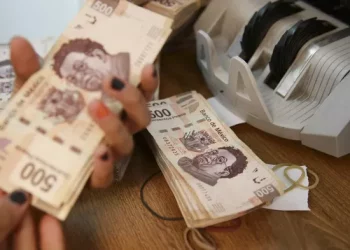The U.S. dollar edged higher in early European trading Wednesday, attempting to recover from the previous session’s sharp losses as cooling U.S. inflation raised expectations that the Federal Reserve has reached the end of its monetary tightening cycle.
As of 03:05 ET (08:05 GMT), the dollar index, which tracks the greenback against a basket of six other currencies, was up 0.1% at 104.057, not far from Tuesday’s two-month low of 103.98.
Weak U.S. CPI hits dollar hard
The dollar was hit hard on Tuesday after data showed that U.S. consumer prices were unchanged in October, while the annual rate rose 3.2%, below expectations, after rising 3.7% in September.
Sticky inflation has been a key point of contention for the Fed in maintaining its hawkish stance, especially after inflation rose more than expected in August and September.
In fact, Fed officials were keen to maintain a hawkish stance ahead of this release, resulting in the downside surprise having a significant impact on the Dollar as traders priced out any chance of another hike this year and turned their attention to when the Fed might start cutting rates.
“We still believe that the decisive blow to ‘dethrone’ the dollar will have to come from a turn lower in the activity data, which can make markets comfortable with pricing in further rate cuts,” analysts at ING said in a note. “So we will be looking at the retail sales data with some interest.”
U.S. retail sales data for October is due later in the session, and analysts expect a 0.3% decline from the previous month, when retail sales rose 0.7%.
Pound Weakens as UK Inflation Falls
In Europe, the GBP/USD fell 0.2% to 1.2475, down from levels last seen in September, after British inflation cooled more than expected in October, providing some relief for the Bank of England.
British consumer prices fell to 4.6% on an annual basis in October, down sharply from 6.7% in September, the smallest increase in two years.
The Bank of England recently paused its rate-hiking cycle, which had seen its benchmark interest rate rise to 5.25%, the highest level since the 2008 financial crisis. However, officials have been keen to stress that they are nowhere near the point of cutting rates, even as the economy approaches recessionary territory.
EUR/USD was down 0.1% at 1.0867, having risen to its highest level since August on Tuesday, ahead of the latest release of Eurozone industrial production, which is expected to show a sharp drop in September.
Growth data released on Tuesday showed that the Eurozone economy contracted slightly in the third quarter from the previous quarter, reinforcing expectations of a technical recession if the fourth quarter is equally weak.
Nevertheless, ECB President Christine Lagarde said last week that interest rates will remain restrictive for at least several quarters as inflation remains elevated.
Yen’s Recovery Stalled by Weak Growth Data
In Asia, the USD/JPY was up 0.2% at 150.66 as the Japanese yen‘s recovery from a one-year low was hampered by weaker-than-expected gross domestic product data.
Data on Wednesday showed that Japan’s GDP contracted much more than expected in the third quarter as sticky inflation and a weak yen weighed on private spending.
USD/CNY fell 0.2% to 7.2398, with the yuan boosted by government data showing that Chinese industrial production and retail sales rose more than expected in October, suggesting that Beijing’s recent stimulus measures are supporting some facets of the economy.



























